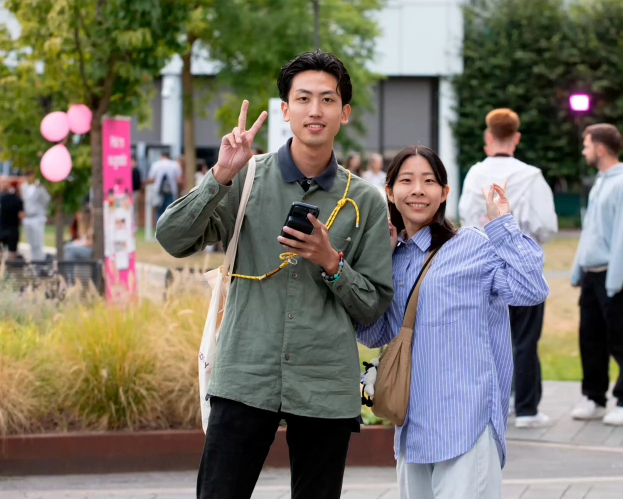

Digital Experience Design
About the exchange programme
Dive into the heart of digital creativity with the Digital Experience Design exchange programme. You'll master the art of designing user-centric digital experiences, leveraging storytelling and critical design principles. Prepare to transform the digital landscape by understanding and innovating at the intersection of technology and human needs.
Why this programme?
- Focus on Human-Centered Design to create impactful digital solutions.
- Enhance abilities in storytelling and critical design for digital media.
- Gain insights into designing for diverse audiences and international markets.
More about Digital Experience Design
We are connected to the people we care about, make futile or important decisions and get many things done with the help of technology. To design media and technology is to shape daily life. This raises important questions. How do we want to live in the future? How do we ensure that technology helps us, improves and supports our lives, in a meaningful way? The future may be hard to predict, but by designing it we can give it direction.
The programme DXD is closely associated with the lectorate Interaction Design. The students benefit from the extensive professional and research experience of the lector and researchers, and the availability of specialist teachers. In addition, partner companies of the lectorate collaborate with teachers and students of the minor in order to provide meaningful educational cases and context. This way, the students learn a lot about doing applied research and build new ties with the professional community.
Judith Gaffert - Lecturer Digital Experience Design
"Digital Experience Design is about immersing yourself in an interesting design challenge, expressing your talents and making a difference in society. And I love being a part of this".
Admission requirements
This exchange programme starts annually in September and is meant for students with an interest in ICT, media and design.
To be admitted to this programme you need to demonstrate the following interests and/or skills:
- Preceding work experience in the field (in the form of an internship)
- Basic knowledge and experience in design processes and user research
- Being able to create digital prototypes through front-end programming and/or prototyping tools.
- Interested in working with people from other cultures and with different ways of working
These entry requirements are tested (after submitting your application) by means of a cover letter and CV sent to
Danny Bloks (our minor coordinator), if necessary followed by an interview. Should there be serious doubts about your chances of successfully finishing this programme, we will help you join a more suitable programme.
English language proficiency
For all exchange programmes a minimum level of proficiency in the English language is required, as detailed in the table below. You must substantiate your level of English-language proficiency by submitting evidence in the form of a language test result pertaining to one of the below-mentioned courses.
* = Only if the units ‘Speaking & Writing’ and ‘Listening & Reading’ have been completed successfully.
- IELTS - 6.0 minimum - EU and non-EU countries
- TOEFL paper - 550 minimum - EU and non-EU countries
- TOEFL computer - 213 minimum - EU and non-EU countries
- TOEFL internet - 79/80 minimum - EU and non-EU countries
- TOEIC* - 670 minimum - only EU countries
- Cambidge ESOL - CAE-C minimum - only EU countries
- CEFR - B2 minimum - only EU countries
How to apply as an exchange student
Applications should always be submitted via the International Exchange (or Erasmus) Officer at the home university. If several versions of the programme are offered, please indicate for which version you would like to apply to (Programme I, Programme II, Programme III, etc.) This officer will send your application request (nomination) to Fontys. Once Fontys has accepted the application, your Fontys study department will send you a link to a web application called Mobility Online.
Deadline for application
Fall semester: 15 May
Spring semester: 15 November
Note: Not all exchange programmes are available every semester. To find out when this programme is offered, please check its specific details.
How will your course programme be recognised by your home university?
Fontys will provide you with a so-called ‘Transcript of Records’, which will clarify the results that you have achieved. Depending on your results, you will receive a maximum of 30 ECTS credits. ECTS credits are recognised throughout Europe. The agreement between your home university and Fontys University of Applied Sciences will usually include a condition whereby the credits that you obtain will be recognised and transferred into the records kept by your home university.
This programme will be graded by either a "Pass" or "Fail".
Practical information
- Start moment(s)
- September, February
- Location
- Eindhoven
- ECTs
- 30
- Language
- English
- Duration
- 1 semester
For more detailed information about practical matters, such as financial matters, residence permit, health insurance and accommodation, please click on the button below.
Fontys ICT offers a variety of exchange programmes. Take a look at our complete offer.

